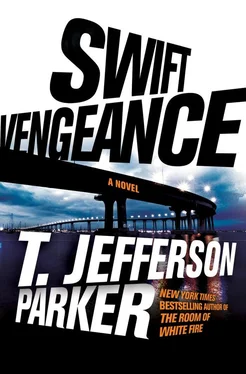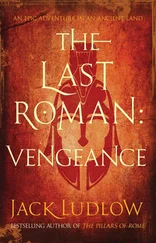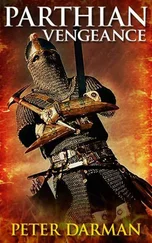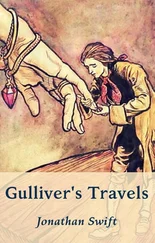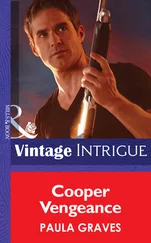“Lindsey told me that drone fliers see things that other fliers don’t see,” I said.
“They see what grunts see,” said Leising. “The RPA crews have more in common with the boots on the ground than the fighter pilots who drop the bombs. On top of that, the more glamorous conventional pilots consider themselves the only ‘real’ pilots. They’re full of swagger and pride. They are celebrated in movies and TV. While RPA fliers are often very disturbed by their killing. So there’s no joy in a flight trailer, Mr. Ford. No rush of velocity. No beers after with your crew. The RPA fliers go home after twelve hours and try to live their lives.”
The word cost came to mind. The cost that Kenny had paid. And Lindsey was still paying. How you measured and weighed it against the good it was intended to do.
Leising picked up his notebook and pen, patiently wrote, then closed the booklet and set it back on the white stand. “Pardon me. I’m writing a book about all this. Robotic warfare and what it does to the human being. It’s a story that should be told.”
“I’ll read it.”
“My wife has promised to also,” said the doctor. “Which gives me two preorders with which to entice an agent.” He looked at me in frank assessment. “You served?”
“Marines.”
“Then you understand the burden drone fliers share with all other men and women in war — that sometimes innocent people die.”
“I understand that burden,” I said.
Leising waited, letting the silence be. “It is the deepest gulf between the expectations of the RPA fliers and what they experience in combat. Because, in spite of what many politicians and generals and the public like to believe about the ‘surgical’ precision of drone warfare, the truth is not so simple. So, on top of the discrete challenges of hunting human beings from thousands of miles away, drone teams have the up-close experience of watching their munitions blow up the wrong people. There’s a twelve-second lapse between the time the pilot says ‘Rifle!’ and the moment the missile destroys its target. Kenny liked to say that those twelve seconds are the longest twelve seconds in sports. Joking, of course. He always was. But the truth is that those twelve seconds could be when the target leaves the room and his wife comes into it. When the child walks from the courtyard into the impact zone. When a boy rides up on a bicycle. When the target answers a knock on his door from an innocent neighbor.”
Another cost, I thought. I had seen innocents killed in Fallujah. Their blood was on my soul but not on my hands.
“Innocent blood was a heavy burden for Kenny Bryce,” said Leising.
Lindsey had never spoken to me about collateral damage. And I had respected her privacy enough not to ask. Soldier to soldier, she knew that I would at least understand the context of the thing. But a soldier’s secrets are hers to keep.
“As combat fliers, I suppose the Headhunters spilled their share,” I said.
He looked at me over the top of his small round spectacles. “I only tell you this because of what has happened to Kenny. And with the hope that it will save Lindsey and Marlon from such a horror. It took Kenny two years to come to the point where he could tell me what I’m about to tell you.”
I waited.
“Do you remember reading about the Doctors Without Borders improvised hospital in Aleppo? In April of 2015?”
“Collateral damage?” I asked.
“One of four improvised hospitals in the eastern half of the city,” said Leising. “A known Islamic State terrorist named Zkrya Gourmat was using it as cover because it was allegedly off-limits to both Assad’s Air Force and coalition drones. Zkrya was a young man, intelligent and charismatic. French born and tech-savvy — a good recruiter. Called his group the Raqqa Twelve. Gourmat was believed to be third in line in domestic IS operations in Syria, behind Baghdadi. The Joint Special Operations Command and the CIA put him on their kill list, no surprise.”
Leising recrossed his legs, sighing. “Gourmat would sneak away from this hospital to make his rounds, and was rarely seen outside. This hospital was a collection of inflatable operating rooms erected within a cave, and other improvised hospitals were little better. One was concealed in a chicken farm just outside of the city. Doctors Without Borders supplied and funded them, but they — the doctors and aid workers themselves — were not officially permitted inside Syria. The hospitals were known as IH-One through IH-Four, and IH-One was Gourmat’s hospital. But he would never stay for more than three days. Then he would appear somewhere else.”
I’d seen pictures from some of those hospitals. Calm doctors trying to put the wounded back together in medieval quarters. “But the Doctors Without Borders volunteers staffed those operating rooms anyway,” I said.
“You bet they did. Such brave people. And while they tried to save lives, Kenny and his Headhunters watched from above. Kenny called it Whac-A-Mole. Gourmat always stayed very close to the doctors and nurses and the White Helmets, who are humanitarian workers, of course. They were his shields. The people of east Aleppo hung on desperately. They even tried to pacify IS by obeying sharia law. Strange as it may sound, Gourmat was actually well liked, Kenny said. The Headhunters would watch him outside the inflatable surgical tent, AK slung over his shoulder, talking and laughing with them. He was banking that the U.S. drones wouldn’t fire on him when he was among innocents, and Assad had granted provisional protection to some hospitals. This was before the Russians came in, and nothing in east Aleppo was spared. It took Kenny and his Headhunters several months, but they realized that Gourmat had to be using footpaths obscured beneath the rubble, and tunnels.
“One day he came up in broad daylight, driving a motorcycle down a dirt path toward a mosque they were using to store arms and ammunition. Kenny contacted the Reaper Operating Center and reported that they’d finally flushed their extremely high-value target. This initiated the ROC ‘kill checklist,’ which establishes all of the conditions, prerequisites, and circumstances needed to take a shot. Gourmat went inside the mosque, and he spent over ten minutes there. But ROC would not approve a launch at or near any mosque or holy site — the same protection afforded to the hospitals. So the Headhunters were ordered to catch Gourmat on the road, alone on his motorcycle, for a collateral-free kill. Gourmat sped back toward IH-One on his motorcycle. Still no approval from the ROC. A common frustration. The American command is careful about such strikes. The CIA, less so. So while Kenny and his flight mates waited for clearance, Gourmat made it all the way back to IH-One. Finally the clearance came through and Voss fired two missiles. But suddenly, and for no apparent reason, Gourmat lost control of the motorcycle and it went into a skid that ended in a pile of rubble not fifty yards from the operating tent. No problem for a laser-guided Hellfire missile. Medical people came pouring out of the hospital to see what had happened. They gathered around Gourmat to see what they could do. Within seconds the missiles hit, and they were all either killed or badly injured.
“Later, Kenny and the Headhunters learned that two of the dead were Doctors Without Borders surgeons, three were nurses, and four were Syrian volunteers. Without them, two hospital patients expired on their cots, awaiting treatment. IS fighters stormed the inflatable shelter to steal painkillers and anything else of value. Back here at Creech, Kenny and his crew watched the spectacle in high-definition color. As I said, it took him two years to tell me about it.”
Читать дальше
